-
tel : +8618150976625
-
E-mail : Hello@MicrofiberLeather.com
tel : +8618150976625
E-mail : Hello@MicrofiberLeather.com

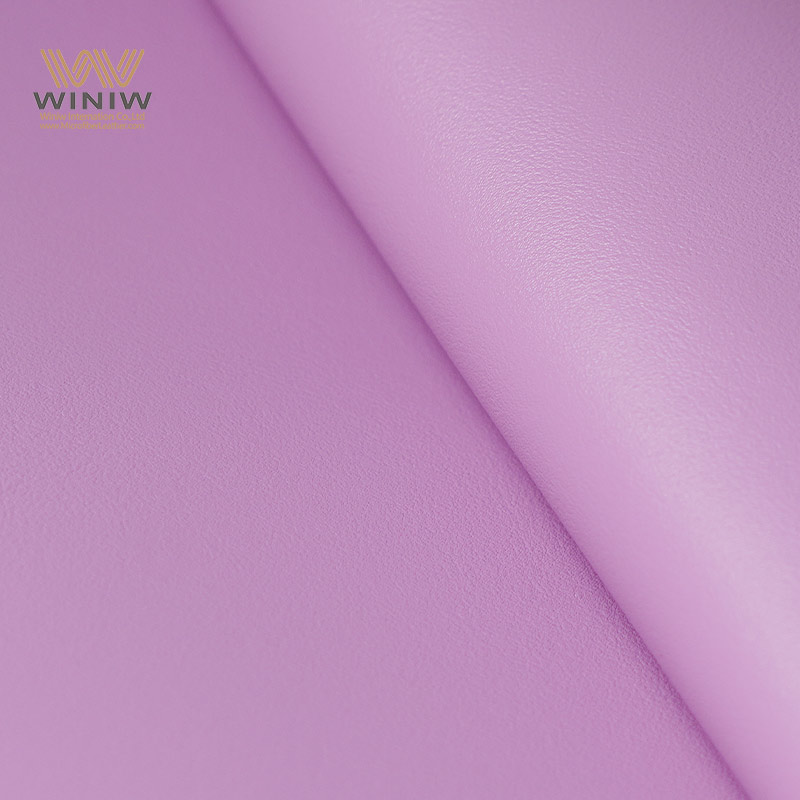
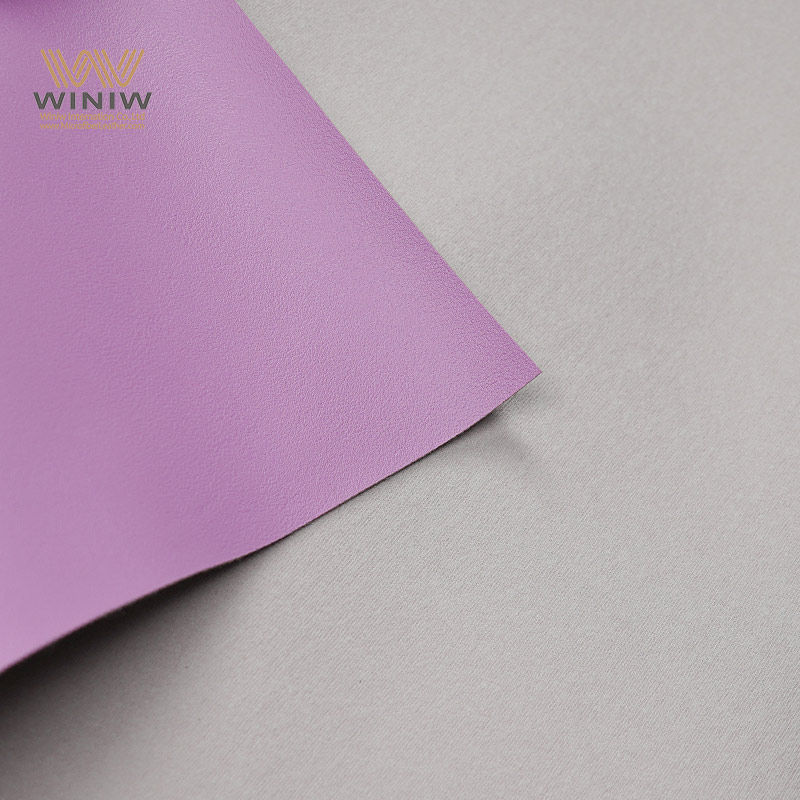
La scelta del PU premium richiede attenzione alla qualità del materiale, alla consistenza e alla durata. Gli acquirenti spesso esaminano pelle PU per morbidezza e flessibilità, ricercando prodotti che assomiglino il più possibile alla vera pelle. Le esigenze di utilizzo, gli obiettivi di progettazione e le priorità di sostenibilità influenzano il processo decisionale. Il mercato globale del PU premium mostra un CAGR previsto di 14,5% dal 2025 al 2032, superando le altre pelli sintetiche.
Tipo di mercato | CAGR previsto | Periodo di previsione |
|---|---|---|
Pelle PU premium (pelle EPU) | 14,5% | Dal 2025 al 2032 |
Di alta qualità Pelle artificiale (Automobile) | 6,0% | Dal 2025 al 2034 |
Questo articolo fornisce ai lettori gli strumenti per riconoscere la pelle PU di qualità ed evitare gli errori più comuni.
Pelle PU di alta qualità imita la vera pelle in morbidezza e flessibilità, il che lo rende una scelta elegante e durevole per varie applicazioni.
Ispeziona la pelle PU per verificarne la qualità, verificandone la consistenza, la flessibilità e le certificazioni come OEKO-TEX, per garantire sicurezza e responsabilità ambientale.
Per evitare errori comuni, quando si scelgono prodotti in pelle PU si consiglia di considerare il comfort, le esigenze di manutenzione e la qualità dei materiali.
Gli acquirenti intelligenti definiscono le proprie esigenze di utilizzo e confrontano i marchi per trovare la pelle PU di alta qualità che soddisfi le loro aspettative in termini di durata e stile.
Una pulizia regolare e una cura adeguata possono prolungare la durata della pelle PU, rendendolo un'alternativa pratica ed ecologica alla vera pelle.
La pelle di poliuretano si distingue nel mondo dei materiali sintetici. I produttori creano questo materiale rivestendo una base in tessuto con uno strato di poliuretano. Questo processo si traduce in una pelle PU che imita l'aspetto e la sensazione della vera pelle. La superficie appare liscia e morbida, mentre la struttura sottostante offre flessibilità e resistenza. I prodotti in poliuretano offrono un equilibrio tra comfort e prestazioni, rendendoli popolari nei settori della moda, dell'automotive e dell'arredamento.
Le proprietà chimiche e fisiche della pelle poliuretanica la distinguono dalle altre opzioni di pelle artificiale. La tabella seguente confronta la pelle PU con Pelle PVC, evidenziando differenze chiave:
Proprietà | Pelle PU | Pelle PVC |
|---|---|---|
Comfort | Più comodo e flessibile | Più rigido e meno flessibile |
Reattività alla temperatura | Sensibile ai cambiamenti di temperatura | Non trattiene il calore |
Prestazioni a lungo termine | Migliori prestazioni a lungo termine | Si consuma più facilmente |
Resistenza all'abrasione superficiale | Più resistente alle abrasioni | Si graffia e si segna facilmente |
Impatto ambientale | Consuma meno sostanze tossiche | Livelli più elevati di inquinanti |
Traspirabilità | Permette il passaggio dell'aria | Quasi un bloccante d'aria |
Odore | Emette un leggero odore | Emette un forte odore chimico |
La pelle PU di alta qualità offre un'esperienza di utilizzo simile a quella del poliuretano. Il materiale è morbido e flessibile, molto simile alla vera pelle. La sua traspirabilità e resistenza all'abrasione garantiscono comfort e durata. I prodotti in poliuretano emettono inoltre meno odori e hanno un impatto ambientale inferiore rispetto ad altre opzioni sintetiche.
Il PU premium offre diversi vantaggi rispetto ai gradi standard. I produttori si concentrano sulla qualità analizzare i requisiti per ogni applicazioneSelezionano la base e il rivestimento più adatti per ottenere morbidezza, flessibilità e durata. Il processo include test a campione per la sensazione tattile, la resistenza all'usura e l'impermeabilità. La verifica della qualità in serie garantisce una qualità costante in ogni lotto.
I produttori definiscono gli obiettivi di utilizzo e di aspetto del prodotto.
Abbinano materiali resistenti all'usura e morbidi.
I test a campione verificano la sensazione tattile e la durata.
La produzione in serie mantiene standard qualitativi costanti.
La pelle PU di alta qualità si distingue per la sua somiglianza alla vera pelle. La superficie è liscia al tatto e la struttura rimane flessibile. Il poliuretano di alta qualità garantisce durevolezza, resistendo all'umidità e all'esposizione ai raggi UV. I prodotti in poliuretano mantengono il loro aspetto e la loro funzionalità nel tempo, rendendoli una scelta affidabile per i consumatori che apprezzano sia lo stile che le prestazioni.
Gli acquirenti che cercano pelle sintetica spesso danno priorità al materiale, alla consistenza e alla durata. Il PU di alta qualità soddisfa queste esigenze grazie a tecniche di produzione avanzate e a rigorosi controlli di qualità. La pelle in poliuretano offre un'alternativa sostenibile, consumando meno sostanze tossiche e riducendo l'impatto ambientale. La combinazione di comfort, prestazioni ed ecocompatibilità rende la pelle PU di alta qualità un'opzione preferita in molti settori.
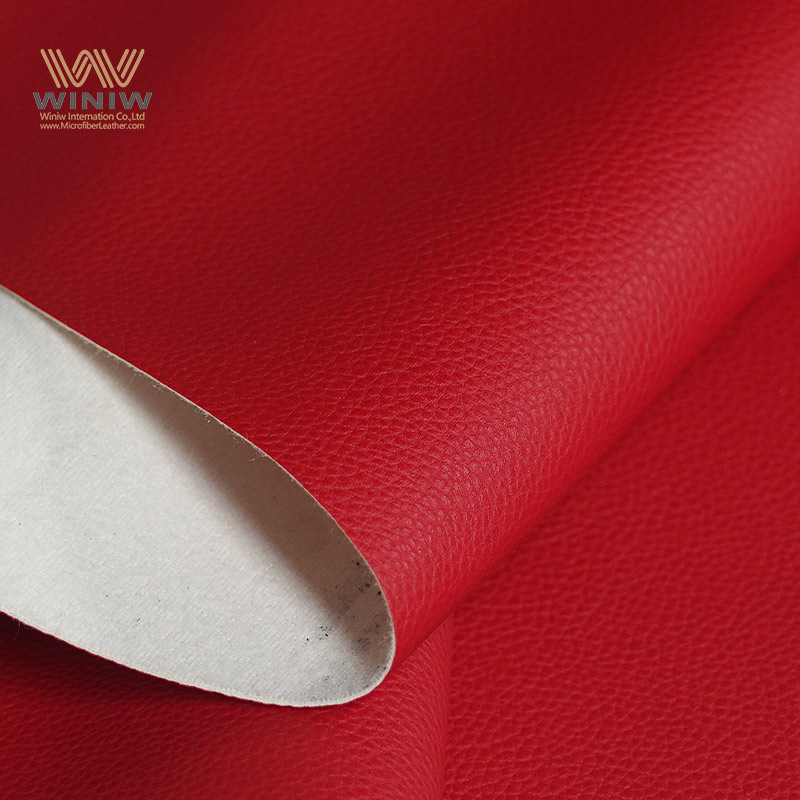
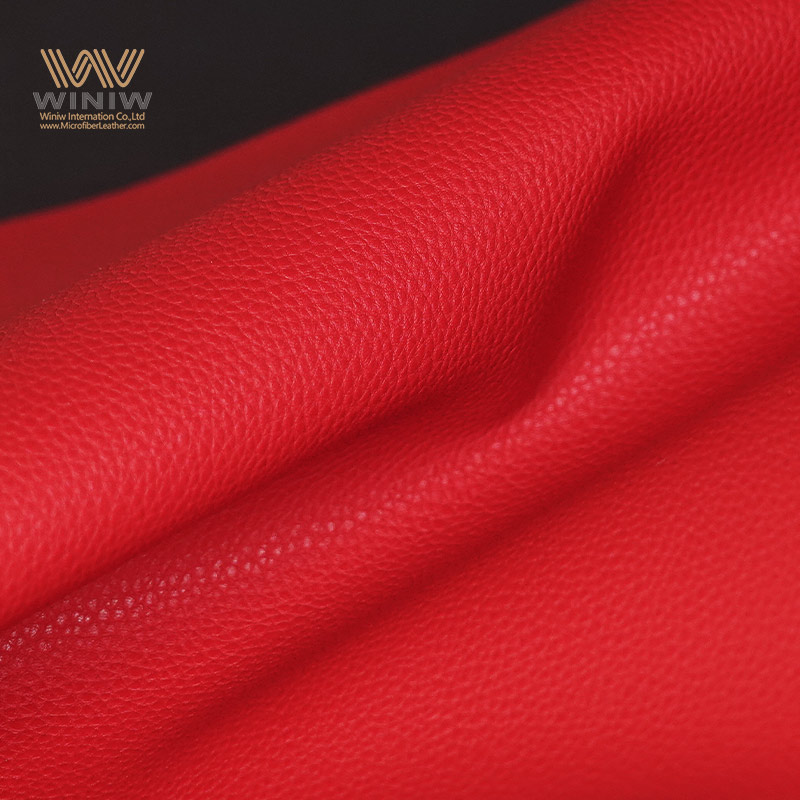
Materiale e consistenza Definiscono la prima impressione della pelle PU. La pelle PU di alta qualità è morbida ed elastica, imitando fedelmente la sensazione tattile della vera pelle. Quando i consumatori toccano la pelle PU di alta qualità, notano una superficie liscia e una leggera grana, che ne segnala l'autenticità. La flessibilità è un indicatore chiave della qualità. Un prodotto di qualità superiore si piega facilmente senza screpolarsi o presentare pieghe. La pelle PU raggiunge questa flessibilità grazie a tecniche di rivestimento avanzate e a una base in tessuto accuratamente selezionata.
Gli acquirenti dovrebbero valutare la sensazione al tatto premendo e piegando delicatamente il materiale. L'autentica pelle PU torna rapidamente alla sua forma originale, dimostrando resilienza. La superficie non dovrebbe risultare eccessivamente plastica o appiccicosa. Dovrebbe invece offrire una texture equilibrata che imiti la pelle naturale. Molti marchi investono nella personalizzazione, consentendo finiture e motivi unici che ne esaltano l'aspetto. Questa attenzione ai dettagli esalta l'esperienza complessiva e distingue la pelle PU premium dalla pelle sintetica standard.
La durabilità rimane una priorità assoluta Per chiunque scelga la pelle PU. Il PU di alta qualità resiste all'usura quotidiana, mantenendo il suo aspetto nel tempo. I produttori progettano prodotti in poliuretano per resistere all'umidità e all'esposizione ai raggi UV, che spesso causano screpolature o scolorimento nei materiali di qualità inferiore. La struttura del PU di alta qualità incorpora resistenza all'abrasione, garantendo che la superficie non si graffi o si graffi facilmente.
Anche la resistenza chimica gioca un ruolo significativo nella longevità della pelle PU. I rivestimenti in poliuretano proteggono da schizzi e macchie, rendendo la pulizia semplice ed efficace. I consumatori beneficiano di prodotti che mantengono colore e consistenza anche dopo un uso prolungato. Le prestazioni della pelle PU di alta qualità si estendono sia alle applicazioni interne che esterne, supportando un'ampia gamma di utilizzi, dall'arredamento agli interni delle auto.
Mancia: Per testare la resistenza, gratta delicatamente la superficie con un'unghia. La pelle sintetica di qualità dovrebbe presentare segni minimi e recuperare rapidamente il suo aspetto originale.
La maestria artigianale distingue la pelle PU eccezionale dalle alternative ordinarie. Gli artigiani esperti prestano molta attenzione alle cuciture, alla finitura dei bordi e all'allineamento dei pannelli. Cuciture uniformi e cuciture strette indicano un impegno per la qualità. I prodotti in poliuretano ben realizzati presentano una distribuzione uniforme di colori e motivi, senza segni di colla visibili o fili allentati.
I produttori utilizzano spesso macchinari all'avanguardia per ottenere tagli precisi e spessori uniformi. Questo processo garantisce che ogni pezzo di pelle sintetica si adatti perfettamente al design desiderato. Le opzioni di personalizzazione, come loghi in rilievo o cuciture decorative, esaltano ulteriormente l'appeal del prodotto. L'attenzione a questi dettagli riflette l'impegno di un marchio nel fornire una qualità superiore.
Ecocompatibilità e sicurezza sono diventate considerazioni essenziali nella scelta della pelle sintetica. I principali produttori richiedono certificazioni che garantiscano una produzione sicura e sostenibile. La tabella seguente evidenzia i seguenti aspetti: certificazioni chiave che indicano un impegno verso la responsabilità ambientale e la sicurezza dei prodotti:
Certificazione | Descrizione |
|---|---|
OEKO-TEX Standard 100 | Garantisce che la pelle PU sia sicura e atossica, adatta ai prodotti a diretto contatto con la pelle. |
ISO 14001 | Indica sistemi efficaci di gestione ambientale. |
GreenGuard Gold | Certifica basse emissioni chimiche per una qualità dell'aria interna più sana. |
TÜV | Certifica la sicurezza e la qualità del prodotto. |
PORTATA | Garantisce la conformità alle normative dell'Unione Europea in materia di sicurezza chimica. |
Direttiva ROHS | Limita l'uso di materiali pericolosi specifici nei prodotti elettrici ed elettronici. |
Le normative ambientali in Nord America stabiliscono limiti rigorosi su emissioni di COV dai prodotti in poliuretano. I produttori rispettano questi standard per proteggere la qualità dell'aria interna e ridurre l'impatto ambientale. Il settore abbraccia anche innovazioni che migliorano la riciclabilità e la riutilizzabilità dei componenti in schiuma, segnalando un passaggio verso pratiche più sostenibili.
Aspetto | Prova |
|---|---|
Emissioni di COV | Il mercato nordamericano è regolato da normative che includono limiti alle emissioni di COV, garantendo il rispetto degli standard ambientali. |
Riciclabilità | Le innovazioni volte a migliorare la riciclabilità e la riutilizzabilità della schiuma stanno guadagnando terreno, indicando un passaggio verso pratiche più sostenibili. |
I consumatori dovrebbero cercare queste certificazioni e informarsi sulle politiche ambientali dei marchi prima di effettuare un acquisto. Le scelte responsabili contribuiscono sia alla sicurezza personale che alla salute del pianeta.
I consumatori spesso si affidano a controlli visivi e tattili per valutare la qualità della pelle PU. La pelle PU di alta qualità si distingue per la sua superficie liscia, il colore uniforme e le finiture raffinate. Quando si ispezionano i prodotti in poliuretano, è importante valutare la flessibilità e l'uniformità della superficie. Un pezzo di pelle PU di alta qualità si piegherà facilmente senza screpolarsi, dimostrando un'elevata flessibilità e resilienza. La tabella seguente riassume i seguenti aspetti: metodi di ispezione consigliati per valutare la pelle PU premium:
Metodo di ispezione | Descrizione |
|---|---|
Ispezione visiva | Vengono controllati l'aspetto generale, le imperfezioni della superficie, la consistenza del colore e i dettagli di finitura. |
Tolleranze dimensionali | Verifica delle dimensioni precise per garantire che il prodotto soddisfi le specifiche. |
Resistenza delle cuciture | Valutazione delle cuciture per confermarne la durata e la qualità. |
Componenti hardware | Test per un fissaggio sicuro e prestazioni durature. |
Uniformità della superficie | Valutazione dei trattamenti dei bordi e della lucidatura per una finitura di prima qualità. |
Gli acquirenti dovrebbero premere e piegare delicatamente la pelle sintetica per verificarne la flessibilità. Possono anche esaminare cuciture e parti metalliche per verificarne la durevolezza e la resistenza all'abrasione. L'uniformità della superficie e i trattamenti dei bordi rivelano il livello di artigianalità e personalizzazione.
Le certificazioni svolgono un ruolo fondamentale a conferma della sicurezza e della responsabilità ambientale dei prodotti in poliuretano. I marchi che offrono poliuretano di alta qualità spesso esibiscono certificazioni come OEKO-TEX Standard 100, ISO 14001 e REACH. Questi standard garantiscono che la pelle PU soddisfi rigorosi requisiti di resistenza chimica e basse emissioni. I consumatori sono invitati a richiedere la documentazione o a controllare le etichette dei prodotti per verificare la presenza di queste certificazioni. I marchi affidabili mantengono la trasparenza sui loro processi produttivi e la conformità agli standard internazionali.
Mancia: Verificate sempre le certificazioni prima di acquistare pelle sintetica. I prodotti certificati garantiscono prestazioni e sicurezza migliori.
Confrontare i marchi e leggere le recensioni aiuta gli acquirenti a prendere decisioni consapevoli. I principali produttori di pelle sintetica investono in tecnologie avanzate e rigorosi controlli di qualità. Le recensioni di altri clienti spesso evidenziano flessibilità, durata e resistenza all'usura. È consigliabile cercare feedback sulle prestazioni a lungo termine dei prodotti in poliuretano e sulle opzioni di personalizzazione. I marchi affidabili offrono costantemente pelle sintetica di alta qualità con una resistenza all'abrasione e agli agenti chimici superiore. Valutando più fonti, gli acquirenti possono selezionare prodotti che soddisfano le loro aspettative in termini di stile e affidabilità.
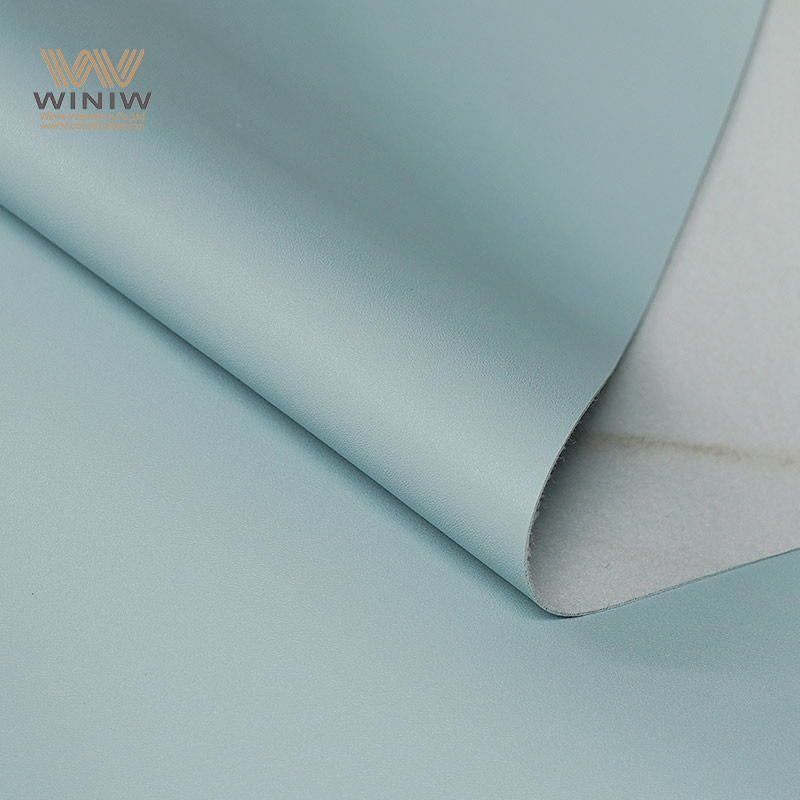
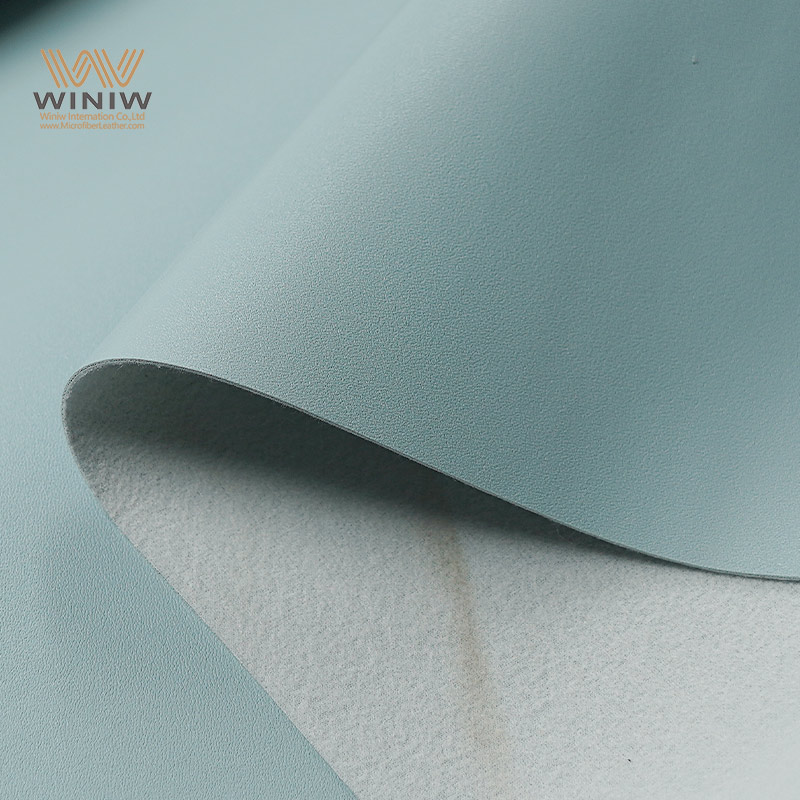
I consumatori spesso chiedono come sapere se è pelle vegana quando si acquistano accessori, scarpe o mobili. Pelle di poliuretano, comunemente chiamata pelle PU, offre un'alternativa sintetica ai materiali di origine animale. I produttori producono PU rivestendo una base tessile, come il poliestere, con uno strato di poliuretano. Questo processo crea un materiale che imita l'aspetto e la sensazione della pelle senza utilizzare prodotti di origine animale.
Le etichette e le descrizioni dei prodotti forniscono indizi preziosi. Molti marchi indicano chiaramente se la loro pelle sintetica è un'opzione 100% vegana o un ibrido contenente componenti di origine animale. La seguente tabella riassume le principali tipologie presenti sul mercato:
Tipo di pelle PU | Descrizione |
|---|---|
Opzione vegana al 100% | Realizzato in tessuto di poliestere o altro tessuto, non contiene prodotti di origine animale, vera pelle vegana. |
Ibrido (pelle bi-fusa) | Utilizza una base di pelle scamosciata, contiene prodotti di origine animale, non è considerato vegano. |
Gli acquirenti dovrebbero controllare le etichette dei prodotti e le inserzioni online per termini come "pelle vegana", "sintetica" o "senza ingredienti di origine animale". Se un prodotto menziona pelle crosta o bi-cast, è probabile che contenga materiali di origine animale.
Mancia: Controlla sempre la descrizione del prodotto e chiedi chiarimenti al venditore se l'etichettatura non ti sembra chiara.
La differenza tra pelle sintetica e vera pelle è evidente nell'aspetto, nelle prestazioni e nella sensazione al tatto. La pelle sintetica vegana utilizza materiali sintetici, mentre la vera pelle deriva da pelli animali. La tabella seguente evidenzia le principali distinzioni:
Caratteristica | Pelle PU vegana | vera pelle |
|---|---|---|
Materiale | Materiali sintetici (PVC o PU) | pelli di animali |
Stato vegano | SÌ | No |
Longevità | Circa 5 anni | 3-10 anni |
Tatto | Più morbido e liscio | Più ruvido, si adatta ai piedi |
Aspetto | Imita la pelle, meno imperfezioni | Grane e imperfezioni uniche |
Peso | Accendino | Più pesante |
Assorbimento d'acqua | Basso | Alto, assorbe l'umidità |
Traspirabilità | Limitato | Alto, consente il flusso d'aria |
Isolamento termico | Minimo | Forte isolamento |
Malleabilità | Mantiene la forma | Si adatta alla forma del piede |
La pelle sintetica vegana è spesso più morbida e leggera. La vera pelle presenta venature uniche e imperfezioni naturali. La pelle poliuretanica è resistente all'acqua e alle macchie, mentre la vera pelle assorbe l'umidità e sviluppa una patina nel tempo.
I consumatori possono effettuare semplici controlli per identificare la pelle vegana. Possono ispezionare la superficie per verificarne l'uniformità, poiché la pelle PU solitamente non presenta le irregolarità tipiche delle pelli animali. Anche l'odore fornisce un indizio: la pelle PU vegana emana un leggero odore chimico, mentre la vera pelle ha un distinto aroma terroso.
🕵️♂️ Nota: Se il prodotto risulta molto liscio, leggero e resistente all'acqua, è probabile che si tratti di pelle PU vegana.
Molti clienti hanno condiviso esperienze positive Dopo essere passata alla pelle sintetica di alta qualità, una cliente, Sarah, ha scelto la pelle sintetica per il divano del suo soggiorno. Ha notato che il materiale offriva un'impressionante flessibilità e una sensazione di morbidezza al tatto. La sua famiglia ha apprezzato il comfort e la somiglianza con la vera pelle. Il divano ha mantenuto il suo aspetto anche dopo un uso frequente, dimostrando un'elevata resistenza a graffi e macchie. Sarah ha apprezzato la durevolezza e la facilità di pulizia. Ha consigliato la pelle sintetica ad amici in cerca di mobili eleganti e pratici.
Un altro cliente, Mark, ha scelto la pelle vegana per la sua sedia da ufficio. Ha trovato la flessibilità della pelle sintetica ideale per lunghe ore di seduta. La sedia offriva supporto e non si deformava nel tempo. Mark ha sottolineato l'aspetto ecologico dei prodotti in poliuretano, sottolineando l'assenza di materiali di origine animale. Era sicuro della sua scelta, sapendo che la sedia soddisfaceva gli standard di sicurezza e le certificazioni ambientali.
"La mia borsa in similpelle ha resistito agli spostamenti quotidiani e alle condizioni meteorologiche imprevedibili. La flessibilità e la resistenza all'usura mi hanno impressionato", ha affermato Emily, una viaggiatrice abituale.
Diversi marchi hanno documentato risultati positivi con pu premiumUn'azienda leader nel settore automobilistico ha sostituito i tradizionali interni in pelle con quelli in similpelle. Il passaggio ha migliorato la flessibilità e ridotto i costi. I clienti hanno segnalato un maggiore comfort e una maggiore soddisfazione. L'azienda ha riscontrato un minor numero di reclami relativi a screpolature e scolorimento, a conferma della durevolezza del poliuretano.
Un rivenditore di moda ha lanciato una nuova linea di borse in pelle PU. I prodotti presentavano texture uniche e colori vivaci. Le vendite sono aumentate poiché i clienti hanno riconosciuto la flessibilità e lo stile del PU. Il rivenditore ha ricevuto feedback positivi sulla sensazione di leggerezza e sulla facilità di manutenzione. Il caso ha dimostrato come il poliuretano possa migliorare la qualità del prodotto e la fidelizzazione dei clienti.
Caso di studio | Tipo di prodotto | Risultato |
|---|---|---|
Marchio automobilistico | Interni auto | Maggiore flessibilità, durata, soddisfazione del cliente |
Rivenditore di moda | Borse | Aumento delle vendite, feedback positivi, stile e resistenza |
Molti acquirenti incontrano difficoltà nella scelta di prodotti in pelle PU. Spesso trascurano il comfort e le esigenze di utilizzo, scegliendo articoli basati solo sull'aspetto o sul prezzo. Questo approccio può portare a delusioni se il prodotto non si adatta alle routine quotidiane o a esigenze specifiche. Alcuni ignorano le esigenze di manutenzione del PU, sottovalutando la pulizia e la cura necessarie per preservare flessibilità e aspetto. Concentrarsi esclusivamente sul prezzo è un altro errore frequente. Le opzioni a basso costo possono mancare di durata e resistenza, con conseguente usura precoce e minore soddisfazione.
Un errore comune consiste nell'ignorare qualità del materialeA volte gli acquirenti non controllano la qualità della pelle PU, il che ne compromette la flessibilità e le prestazioni a lungo termine. Anche ignorare la garanzia o le politiche di reso può creare problemi. Non tutti i prodotti in poliuretano offrono la stessa protezione e gli acquirenti potrebbero non essere in grado di risolvere i problemi in caso di difetti.
Errori frequenti degli acquirenti:
Non considerando requisiti di manutenzione
Concentrarsi solo sul prezzo
Ignorando la qualità del materiale
Saltare la garanzia o le politiche di reso
🛑 Mancia: Prima di effettuare un acquisto, controllare sempre le specifiche del prodotto e chiedere informazioni sulla copertura della garanzia.
Gli acquirenti intelligenti affrontano la selezione della pelle sintetica con una strategia chiara. Iniziano definendo come e dove verrà utilizzato il prodotto, assicurandosi che la flessibilità corrisponda alle loro esigenze. Verificare i pro e i contro della pelle sintetica aiuta gli acquirenti a capire cosa aspettarsi in termini di durata, resistenza e manutenzione. Confrontare i marchi e leggere le recensioni fornisce informazioni sulle prestazioni reali e sulla soddisfazione del cliente.
Gli acquirenti dovrebbero ispezionare il materiale per verificarne flessibilità e resistenza. Possono testare la superficie piegando o premendo delicatamente la pelle, verificando che si riprenda rapidamente e che i segni siano minimi. Chiedere informazioni sulle certificazioni del poliuretano e sugli standard di sicurezza garantisce che il prodotto soddisfi i requisiti del settore. Esaminare le politiche di reso e le opzioni di garanzia protegge da problemi imprevisti.
Consigli per un acquisto intelligente di pelle PU | Beneficio |
|---|---|
Definire le esigenze di utilizzo e comfort | Abbina flessibilità e funzionalità |
Controllare la qualità e il grado del materiale | Garantisce durata e resistenza |
Esaminare i requisiti di manutenzione | Semplifica la pulizia e la cura |
Confronta i marchi e leggi le recensioni | Svela i pro e i contro della pelle PU |
Verificare le politiche di garanzia e reso | Fornisce protezione e tranquillità |
✅ Nota: Un'ispezione attenta e domande informate aiutano gli acquirenti a evitare errori comuni e a scegliere prodotti in pelle PU di alta qualità.
La scelta di prodotti in PU di alta qualità richiede un'attenta selezione di materiali, texture e durata. Gli acquirenti dovrebbero ispezionare la pelle PU per verificarne la morbidezza e la flessibilità, verificandone la qualità attraverso certificazioni e recensioni dei clienti. È utile comprendere le prestazioni della pelle nell'uso quotidiano e come il PU di alta qualità soddisfi gli obiettivi di design e sostenibilità. I lettori possono applicare questi suggerimenti per fare scelte consapevoli e condividere le proprie storie sulla pelle.
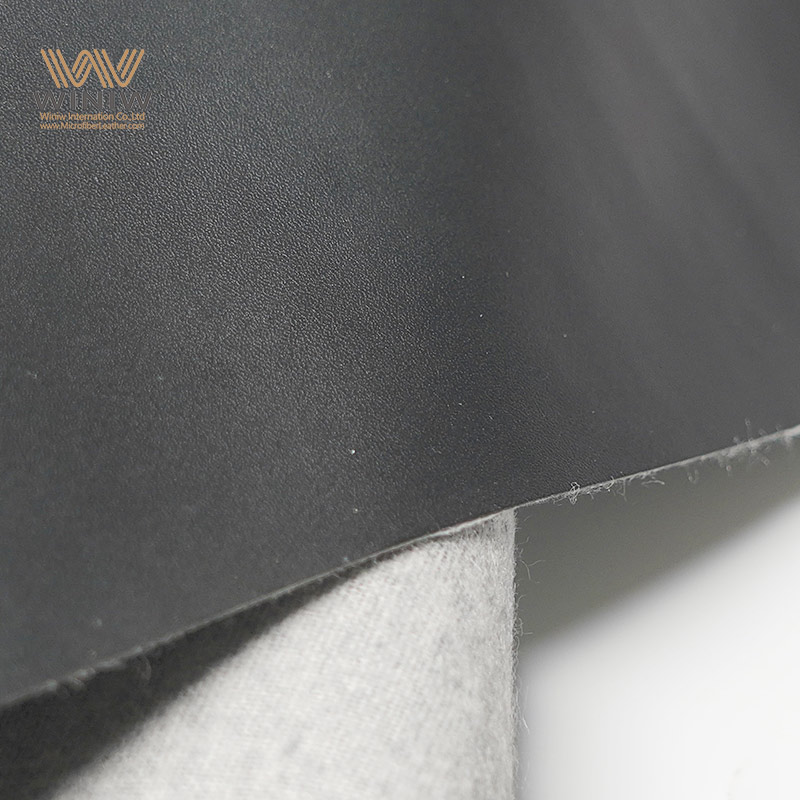
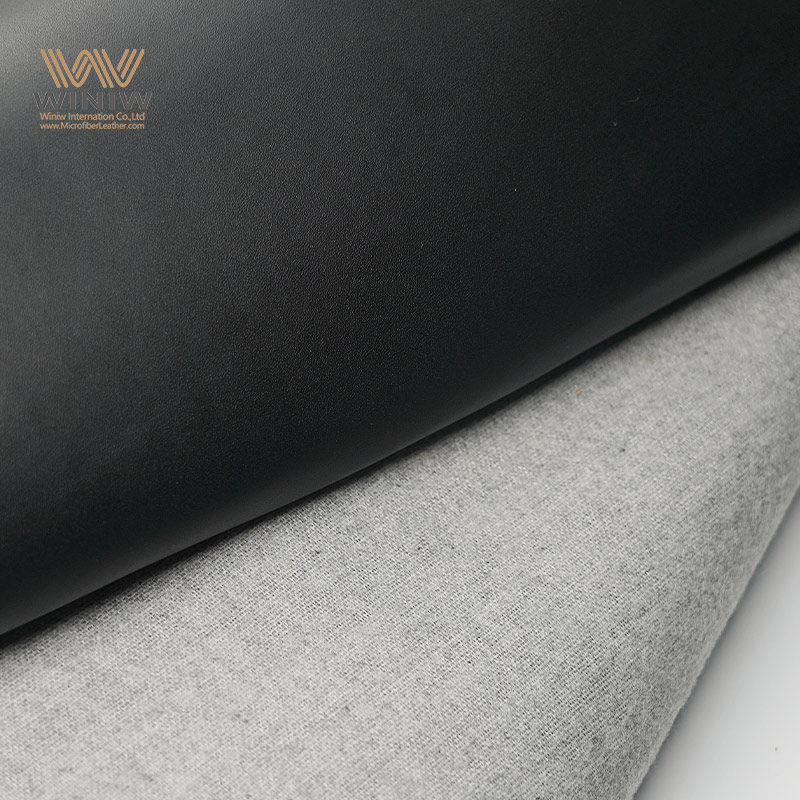
La pelle PU di alta qualità presenta una superficie liscia, un colore uniforme e una consistenza morbida. Il materiale si piega facilmente senza screpolarsi. I marchi spesso espongono certificazioni come OEKO-TEX o REACH. Gli acquirenti sono invitati a controllare le etichette dei prodotti e a richiedere la relativa documentazione.
Per pulire la pelle sintetica, utilizzare un panno morbido e un sapone delicato. Evitare prodotti chimici aggressivi o spugne abrasive. Pulire immediatamente eventuali fuoriuscite. Una pulizia regolare aiuta a preservare la flessibilità e l'aspetto.
I produttori progettano la pelle PU di alta qualità per ridurre le sostanze tossiche e le emissioni. Certificazioni come ISO 14001 e GreenGuard Gold indicano una produzione ecosostenibile. Gli acquirenti dovrebbero verificare queste certificazioni al momento della scelta dei prodotti.
Certificazione | Beneficio ecologico |
|---|---|
OEKO-TEX | Materiali non tossici |
ISO 14001 | Gestione ambientale |
GreenGuard Gold | Basse emissioni chimiche |
La pelle PU di alta qualità resiste a graffi, macchie e scolorimento. Dura circa cinque anni con la dovuta cura. La vera pelle può durare più a lungo, ma richiede una maggiore manutenzione.
💡 Mancia: Conservare la pelle PU lontano dalla luce solare diretta per evitare che sbiadisca e prolungare la durata del prodotto.
I produttori progettano la pelle PU di alta qualità per resistere all'umidità e all'esposizione ai raggi UV. È adatta per l'arredamento da esterno, ma richiede una pulizia regolare e una protezione dalle intemperie estreme.